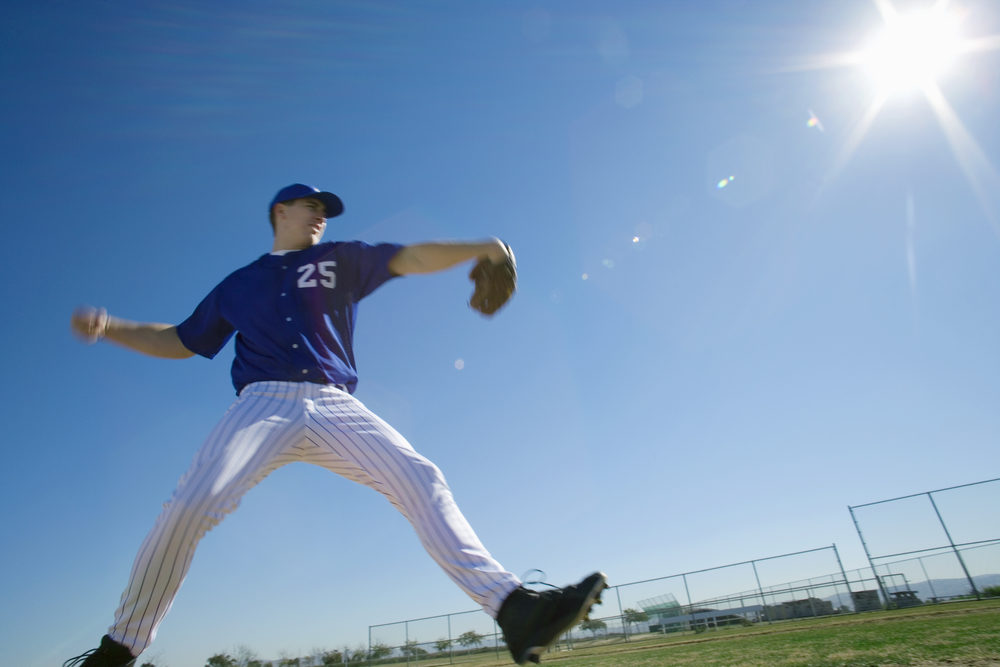Sports injuries are common but avoidable — if you take the proper precautions before heading out on the field.
While beneficial to your physical and mental health, vigorous exercise also puts you at a higher risk for a debilitating injury. But being aware of some common sports injuries and the proper precautions you can take to prevent them will help keep you in the game longer.
Whether you enjoy organized sports like basketball or baseball, or are just an avid gym goer, you may be at risk for one of these common injuries:
ACL TEAR
The frequent stopping, jumping, and pivoting involved in football, soccer, or skiing can stress the anterior cruciate ligament (ACL) in the knee. If it ruptures, the joint loses its stability and swells. Depending upon whether it’s a complete or partial tear, a damaged ACL can be treated with either physical therapy or surgery.
ROTATOR CUFF TEAR
A network of tendons and muscles surrounds the shoulder, allowing the joint to rotate. With repeated overhead motions such as throwing a baseball or hitting a tennis ball, the rotator cuff may wear down and tear. This causes pain, weakness, and tenderness in the shoulder. A rotator cuff injury is most often treated with minimally invasive arthroscopic surgery.
SPRAINED ANKLE
Athletes who regularly run and jump may be at risk of a sprained ankle. The injury stretches the ligaments connecting the bones of the joint, causing you to experience a throbbing pain and loss of mobility. If you suspect you have a sprain, stop playing and rest the ankle for at least two days. Wrap the ankle with an ace bandage to stabilize it, and apply ice several times a day.
SLAP TEAR
A SLAP tear, or Superior Labral tear from Anterior to Posterior tear, describes an injury to the labrum, a rim of cartilage covering the shoulder socket. Athletes who lift and rotate their arms repeatedly like swimmers and baseball players have the greatest risk of experiencing a SLAP tear. Common symptoms include pain, a limited range of motion, and weakness. Rest and physical therapy are the first line of treatment for a SLAP tear, with surgery recommended only if conservative therapy fails to resolve the injury.
HOW TO PREVENT SPORTS INJURIES
Fortunately, there are some simple steps you can take to prevent common sports injuries. With these four tips, you can protect your muscles and joints and stay on the playing field for years to come.
Warm Up.
Properly stretching your muscles, doing a light workout, or jogging at a slow pace before diving into vigorous activity boosts blood flow and flexibility. If you’re not used to strenuous exercise, first build up your strength and stamina before attempting anything more ambitious. Lift light weights to strengthen your muscles and do some cardio exercises to build up your endurance.
Wear the Proper Equipment.
Supportive athletic shoes protect against sprained ankles, shin splints, and heel spurs. Playing certain sports requires you wear protective gear as well. For example, soccer players should use knee braces and elbow pads.
Vary Your Activity.
Many sports injuries affect athletes who continually make the same movements or perform the same activities. These repetitions stress overworked ligaments, joints, and muscles. Cross-training exercises or participating in a variety of different sports reduces the odds of an overuse injury by working all muscle groups.
Know When to Take a Break.
When pain hits, stop your workout immediately and let your body heal. Continuing to play may worsen the injury. If the pain persists or intensifies, visit your doctor for an accurate diagnosis.
The orthopedic specialists at New York Bone & Joint have successfully treated a variety of sports injuries, from rotator cuff tears to sprained ankles. If you’re injured or think you may be at risk, set up an appointment with one of our experienced doctors today. We’ll help you develop a personalized treatment plan to get you back on the field in no time.




